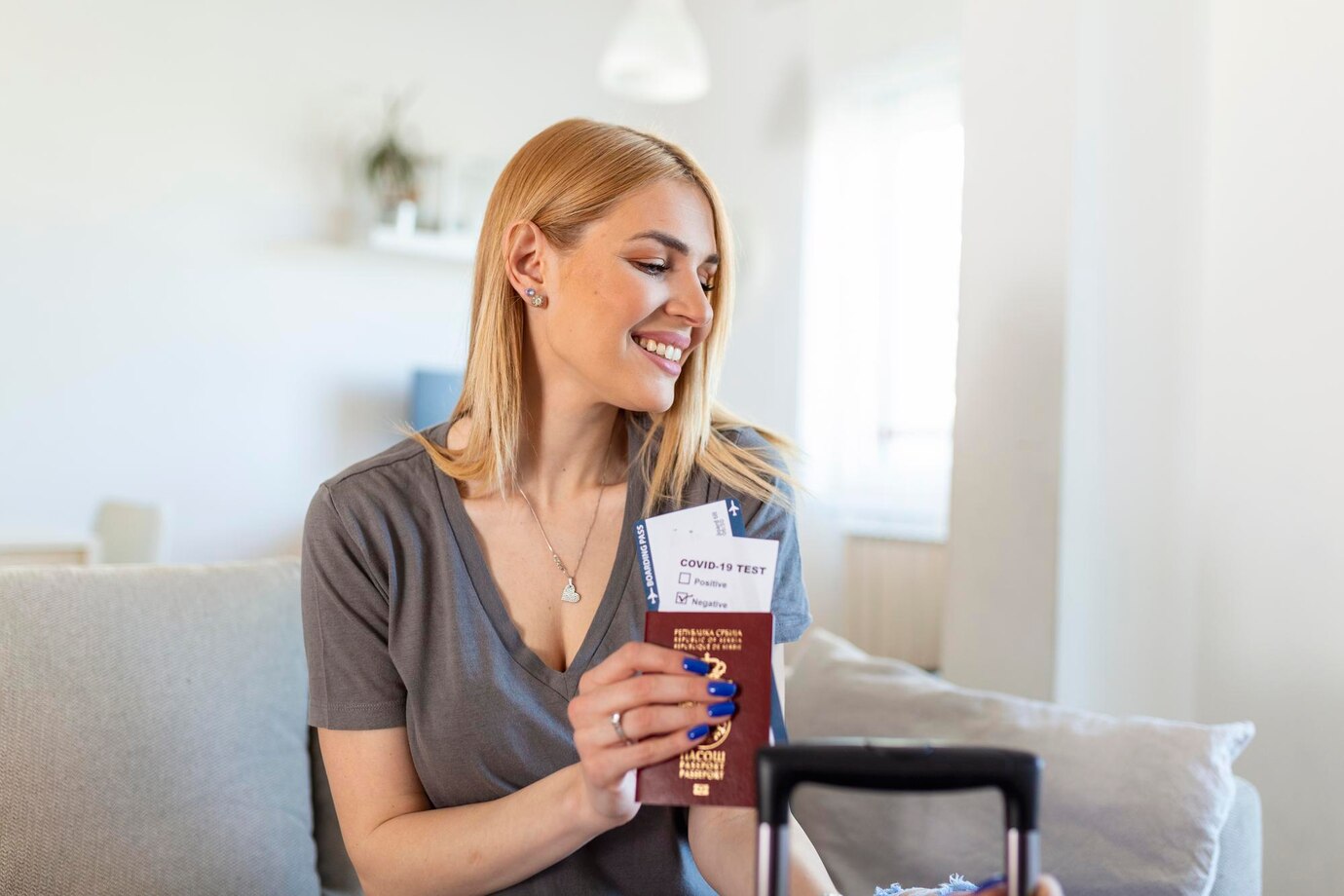Embarking on a new adventure often begins with a seemingly mundane task: the passport photo. Forget pricey studios and last-minute dashes – crafting your official portrait can be surprisingly achievable from the comfort of your own home. But amidst the convenience, navigating the strict regulations and technical considerations can feel daunting. Fear not, intrepid traveler! This guide unveils the secrets to snapping picture-perfect passport photos yourself, ensuring your travel document reflects your genuine excitement for the journey ahead.
The Importance of Passport Photos
Passport photos hold a paramount role in the realm of official documentation, serving as a visual key to personal identity. These small, seemingly mundane images are, in fact, gatekeepers to a multitude of significant life events – international travel, driver’s licenses, and visa applications, to name a few. As gateways to crucial identification documents, passport photos play a vital role in ensuring security, accuracy, and the seamless execution of administrative processes.
- Beyond their functional significance, passport photos serve as visual markers of individual identity within the bureaucratic landscape. They encapsulate the essence of an individual at a specific point in time, frozen in a frame that transcends mere aesthetic considerations. The importance of adhering to the stringent guidelines governing passport photos cannot be overstated. Any deviation from these guidelines may result in the rejection of official applications, leading to delays and inconveniences for the individuals involved.
In a world increasingly reliant on digital means of identification, the significance of passport photos extends beyond physical paperwork. The accuracy and quality of these images directly impact the efficiency of facial recognition technologies employed at borders and security checkpoints. As such, the meticulous process of capturing passport photos becomes not only a personal responsibility but a collective commitment to maintaining the integrity and security of identification systems on a global scale.
In essence, passport photos transcend their seemingly mundane nature, becoming linchpins in the complex machinery of modern identification processes. Understanding the gravity of these images underscores the need for a conscientious approach to their creation, whether at a professional studio or within the confines of one’s home. The journey towards mastering the art of passport photography is not merely a pursuit of visual aesthetics; it is an acknowledgment of the pivotal role these images play in shaping individual experiences within the broader context of a highly interconnected world.
Creating a Suitable Environment
The creation of a suitable environment for passport photography goes beyond the mere selection of a backdrop; it involves the orchestration of elements that collectively contribute to a photographically conducive space. A well-lit environment is paramount, with an emphasis on leveraging natural light when possible. Soft, diffused natural light, either from a window or an open outdoor space, minimizes harsh shadows and provides a flattering illumination for the subject.
- Equally crucial is the selection of a neutral background. The backdrop should be plain and unobtrusive, devoid of distracting patterns or colors. This neutrality ensures that the focus remains squarely on the subject’s facial features, adhering to the specific guidelines mandated by passport authorities. The choice of a neutral background also facilitates easy integration into the standardized formats required for official documentation.
- For those opting for artificial lighting, the strategic placement of lights is vital. A two-light setup, commonly known as key and fill lights, can help achieve a well-balanced illumination. The key light, positioned to one side of the subject, provides the primary illumination, while the fill light, placed on the opposite side, helps soften shadows, resulting in a more even and natural-looking photograph.
The overall goal is to create an environment that not only meets the technical specifications outlined by regulatory bodies but also contributes to a comfortable and cooperative atmosphere for the subject. A well-thought-out environment not only enhances the quality of the passport photo but also eases the process for both the photographer and the person being photographed, making the overall experience more efficient and enjoyable. In essence, the environment becomes a silent collaborator in the creation of a photograph that transcends mere compliance, embodying a harmonious blend of technical precision and human-centric considerations.
Camera and Equipment
The selection of an appropriate camera and equipment is pivotal in ensuring the technical integrity of passport photos taken at home. Here are key considerations:
| Category | Consideration | Recommendations and Tips |
| Camera | Resolution | Choose a camera with at least 2 megapixels. |
| Camera Type | DSLR, mirrorless, or high-quality smartphone camera. | |
| Settings | Set the camera to capture high-resolution images (RAW or high-quality JPEG). | |
| Equipment | Tripod | Use a stable tripod for consistent and sharp images. |
| Remote Trigger/Timer | Employ a remote trigger or timer for hands-free shooting. | |
| Lighting | Natural Light | Position subject facing a window for soft, diffused sunlight. Avoid harsh shadows. |
| Artificial Lighting | Use a two-light setup – key light for primary illumination, fill light to soften shadows. | |
| Background | Backdrop | Utilize a neutral-colored backdrop (white, light gray, or light blue). |
| Backdrop Support System | Ensure a wrinkle-free background with a support system. | |
| Accessories | Lens | Choose a moderate focal length lens (e.g., 50mm) to minimize distortion. |
| Reflector | Use a reflector to bounce light onto shadowed areas. | |
| Settings | Framing and Composition | Follow passport photo guidelines for centered framing. |
| Focus and Depth of Field | Achieve sharp focus on the subject’s face with adequate depth of field. |
Camera:
- Resolution: Choose a camera with sufficient resolution to meet passport photo requirements. A resolution of at least 2 megapixels is typically recommended.
- Camera Type: While a DSLR or mirrorless camera is optimal, modern smartphones with high-quality cameras can also suffice, provided they meet resolution criteria.
- Settings: Set the camera to capture images in a high-resolution format, preferably in RAW or high-quality JPEG, ensuring clarity and detail.
Equipment:
- Tripod: A stable platform is essential for consistent and sharp images. A tripod helps avoid camera shake and ensures uniformity across multiple shots.
- Remote Trigger/Timer: To capture photos without assistance, a remote trigger or timer function can be invaluable. This minimizes the risk of motion blur caused by manual shutter release.
Lighting Equipment:
- Natural Light: If using natural light, position the subject facing a window to benefit from soft, diffused sunlight. Avoid harsh shadows by diffusing direct sunlight through curtains or blinds.
- Artificial Lighting: For controlled lighting, consider using two light sources – a key light for primary illumination and a fill light to soften shadows. Position lights at a 45-degree angle from the subject.
Background Setup:
- Backdrop: Utilize a neutral-colored backdrop to comply with passport photo regulations. White, light gray, or light blue backdrops are commonly recommended.
- Backdrop Support System: Use a backdrop support system to ensure the seamless and wrinkle-free placement of the background.
Additional Accessories:
- Lens: If using a DSLR or mirrorless camera, choose a lens with a moderate focal length (e.g., 50mm) to minimize distortion and capture the subject accurately.
- Reflector: A reflector can be employed to bounce light onto shadowed areas, enhancing facial features and maintaining a well-lit appearance.
Camera Settings:
- Framing and Composition: Follow passport photo guidelines for framing, ensuring the subject’s face is centered and occupies the specified percentage of the frame.
- Focus and Depth of Field: Achieve sharp focus on the subject’s face. Use an aperture setting that provides adequate depth of field to keep the entire face in focus.
By meticulously considering and arranging these camera and equipment elements, photographers can ensure a technically sound foundation for capturing passport photos at home, meeting the stringent requirements set by official authorities.

